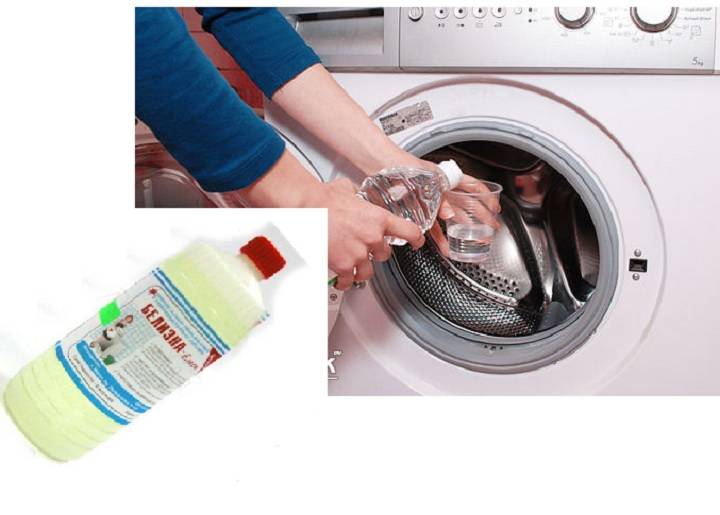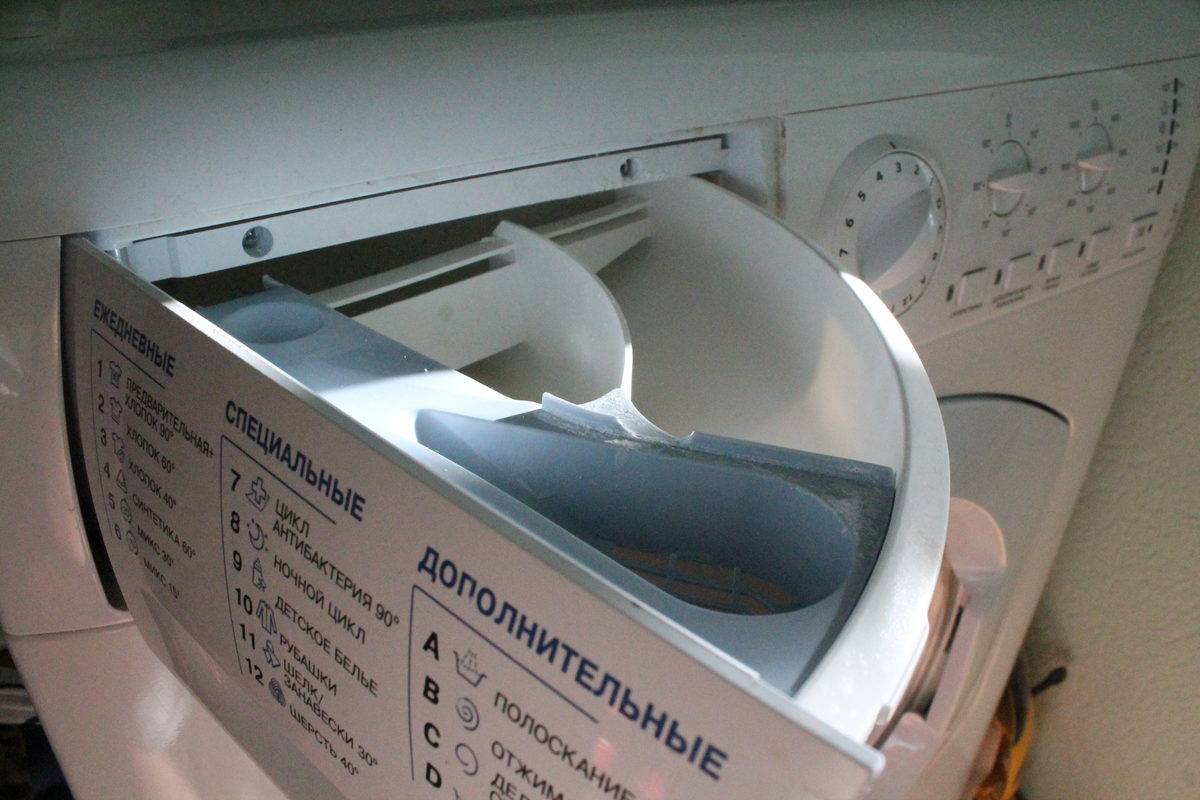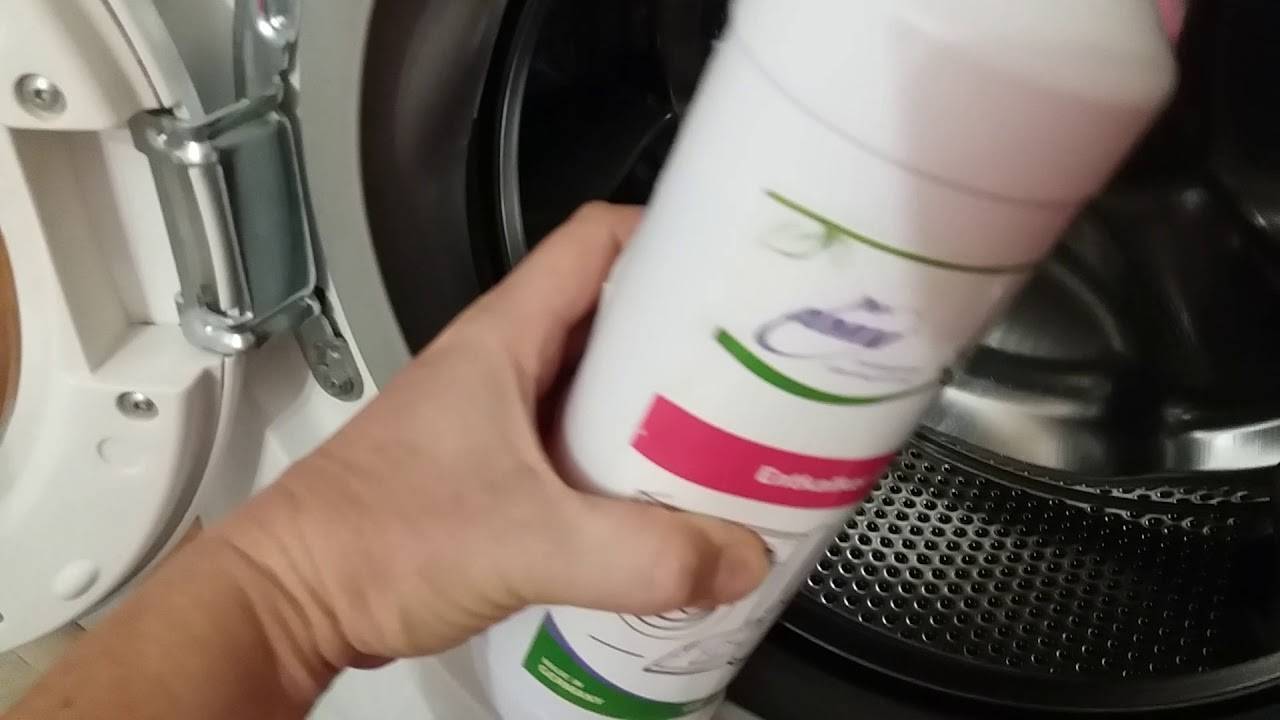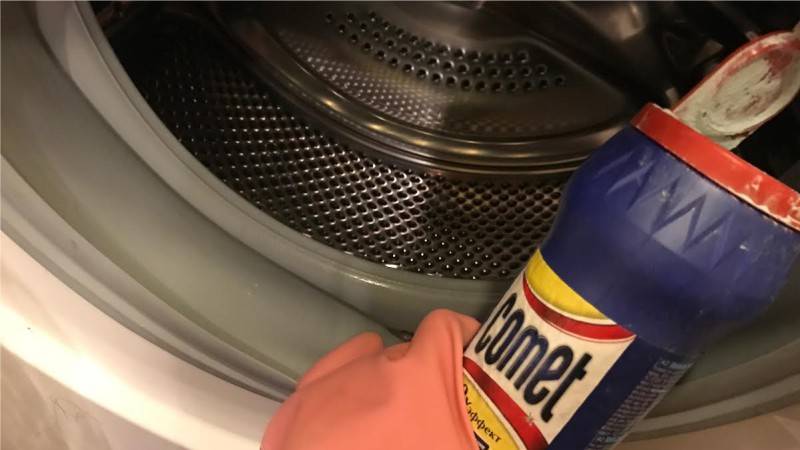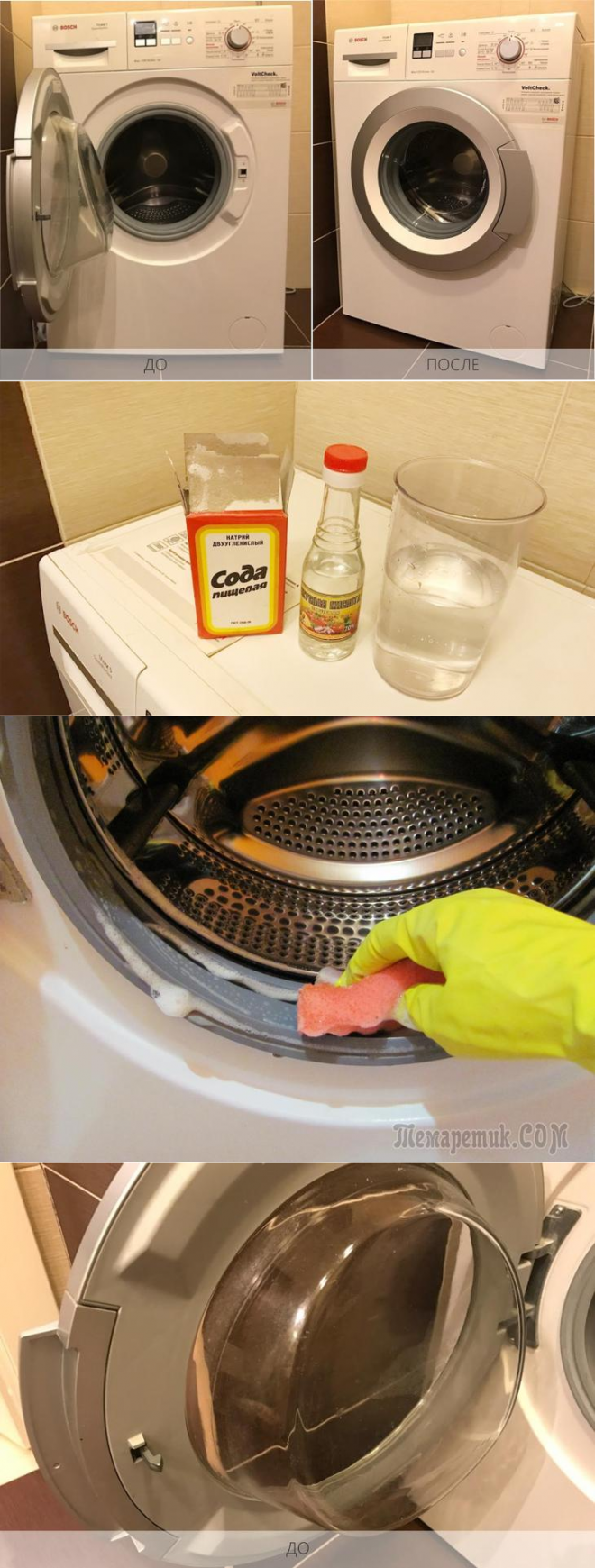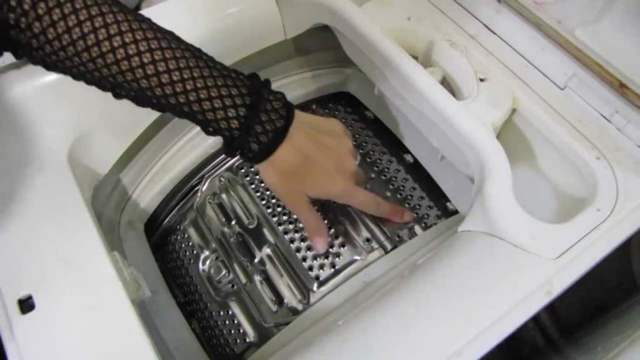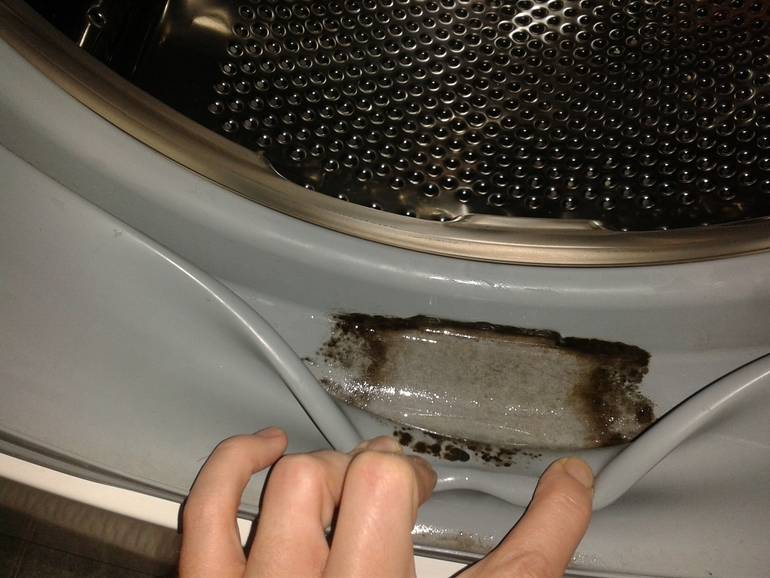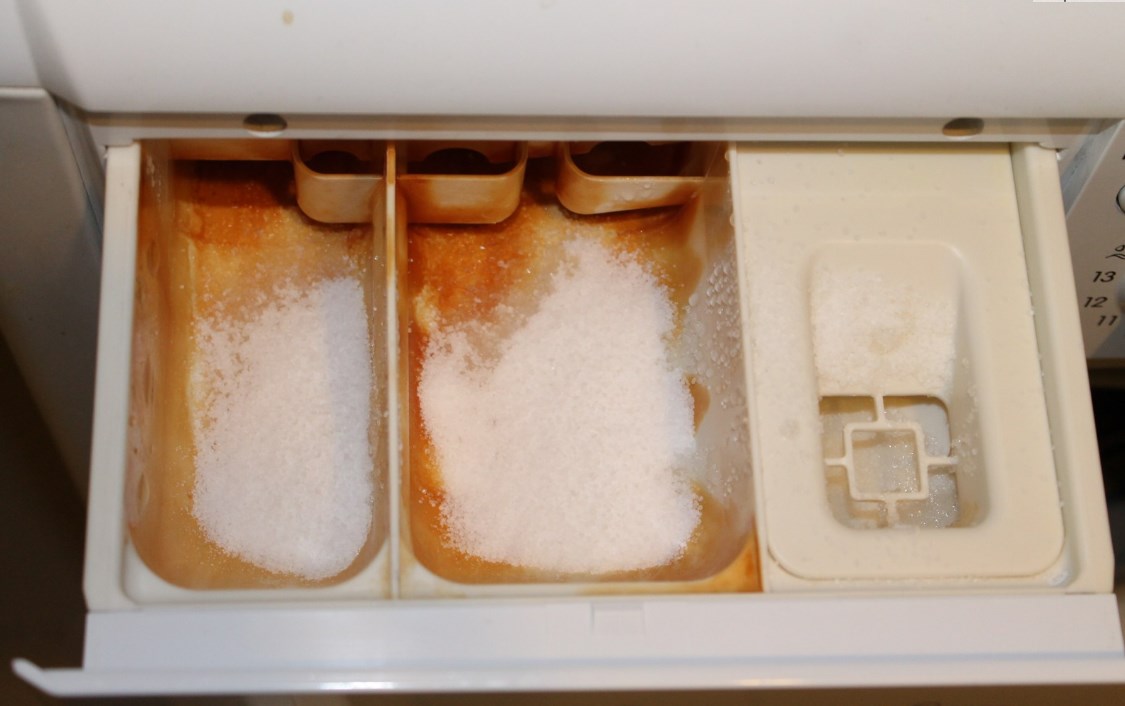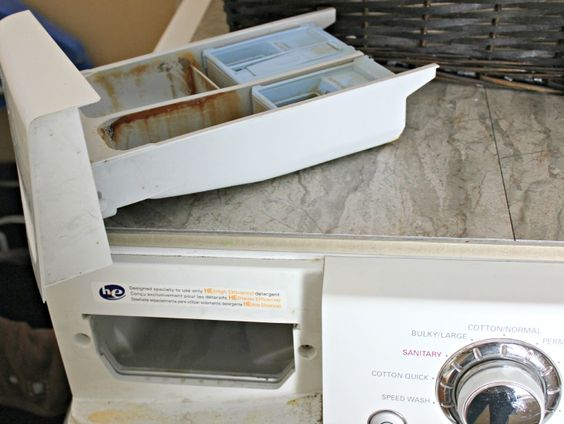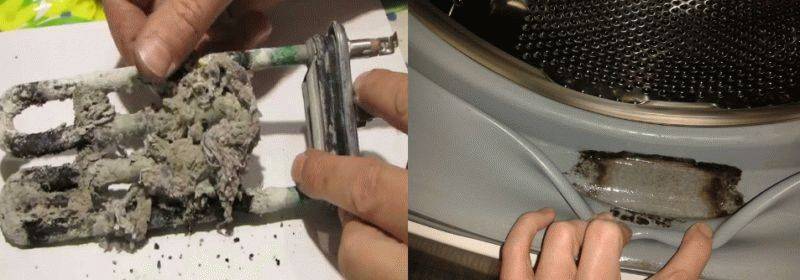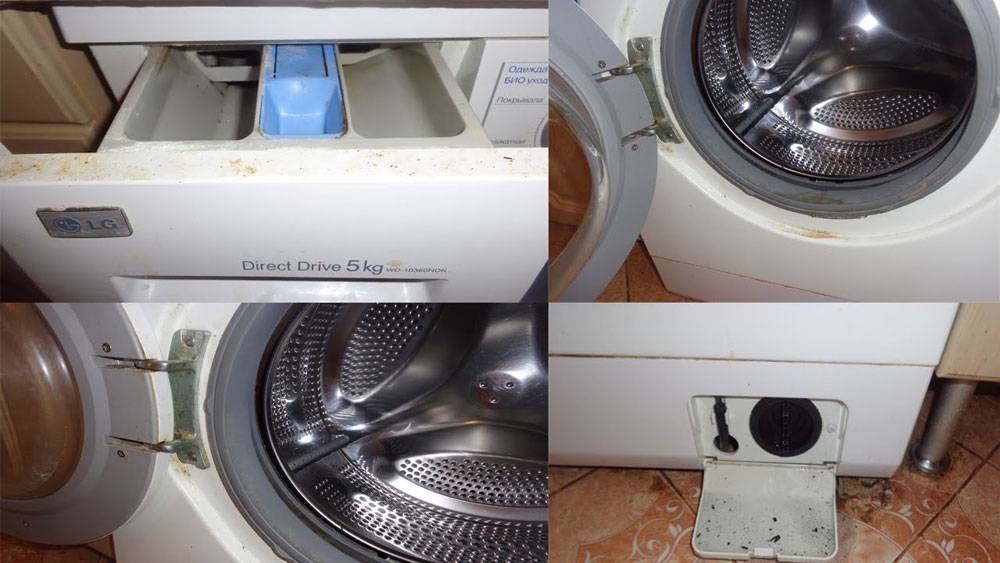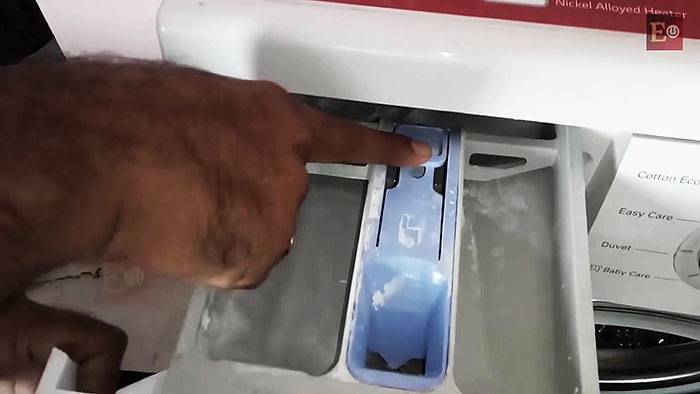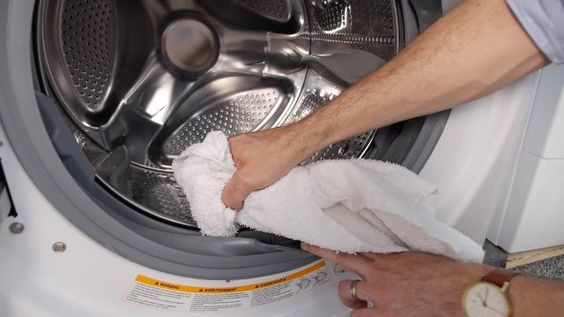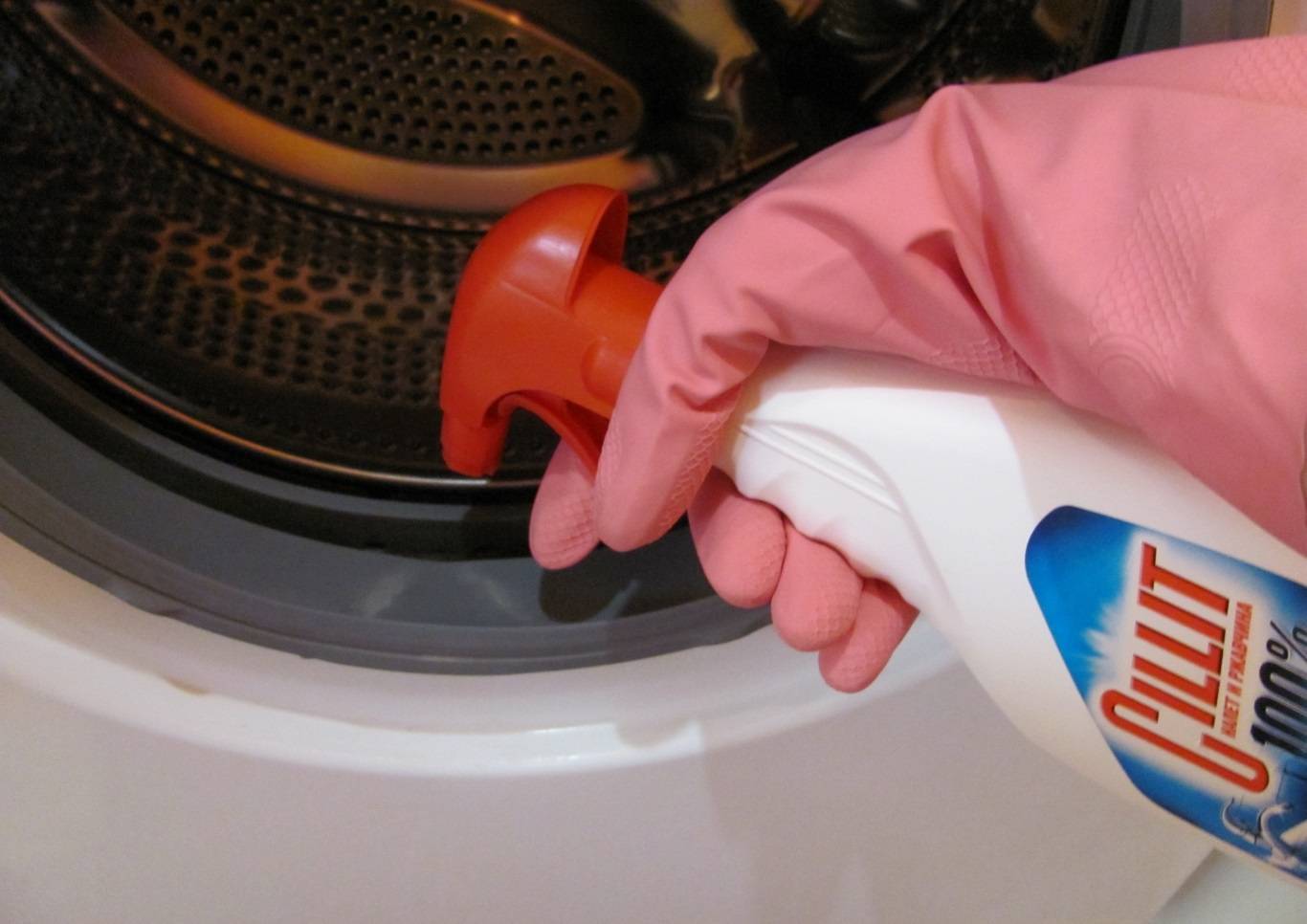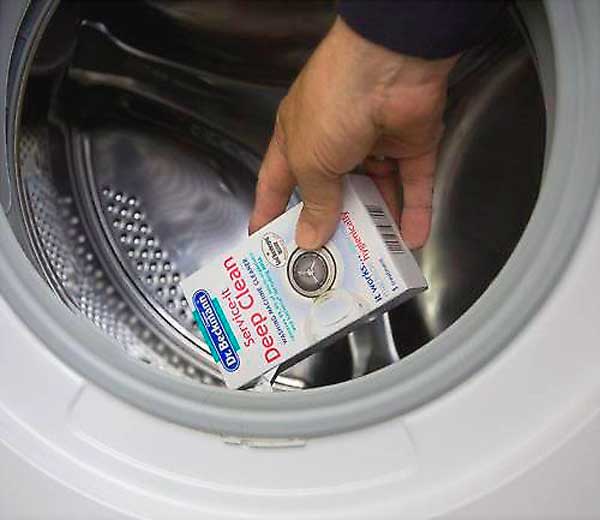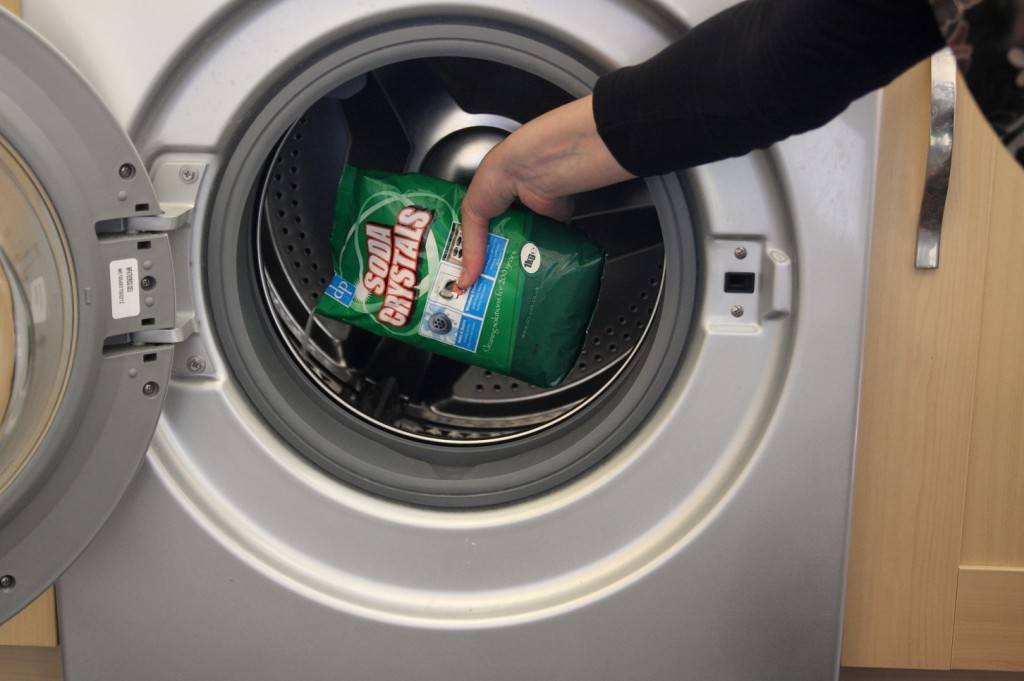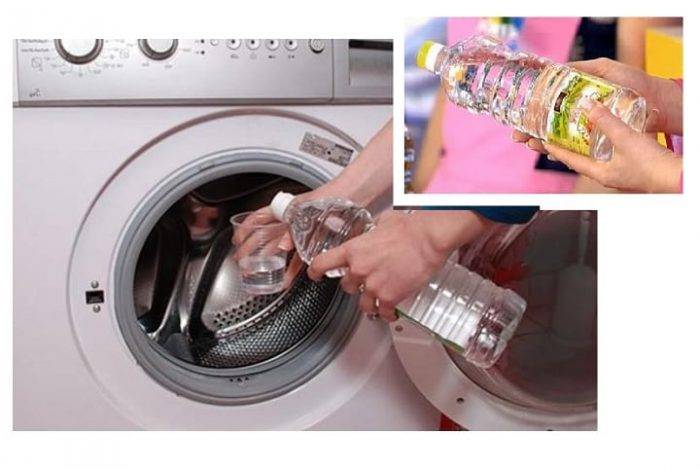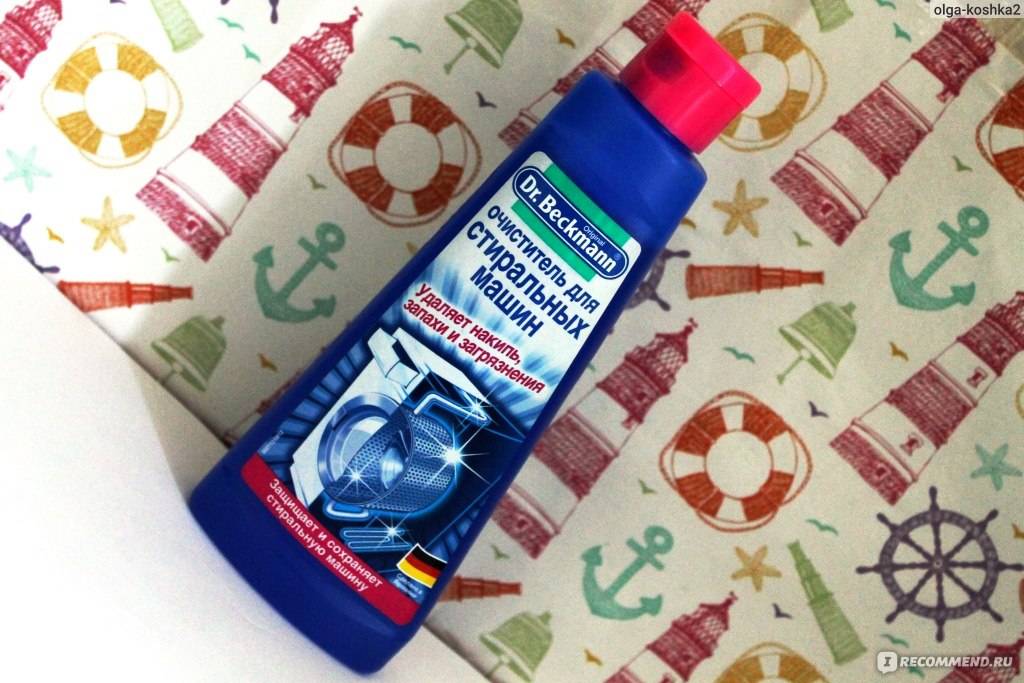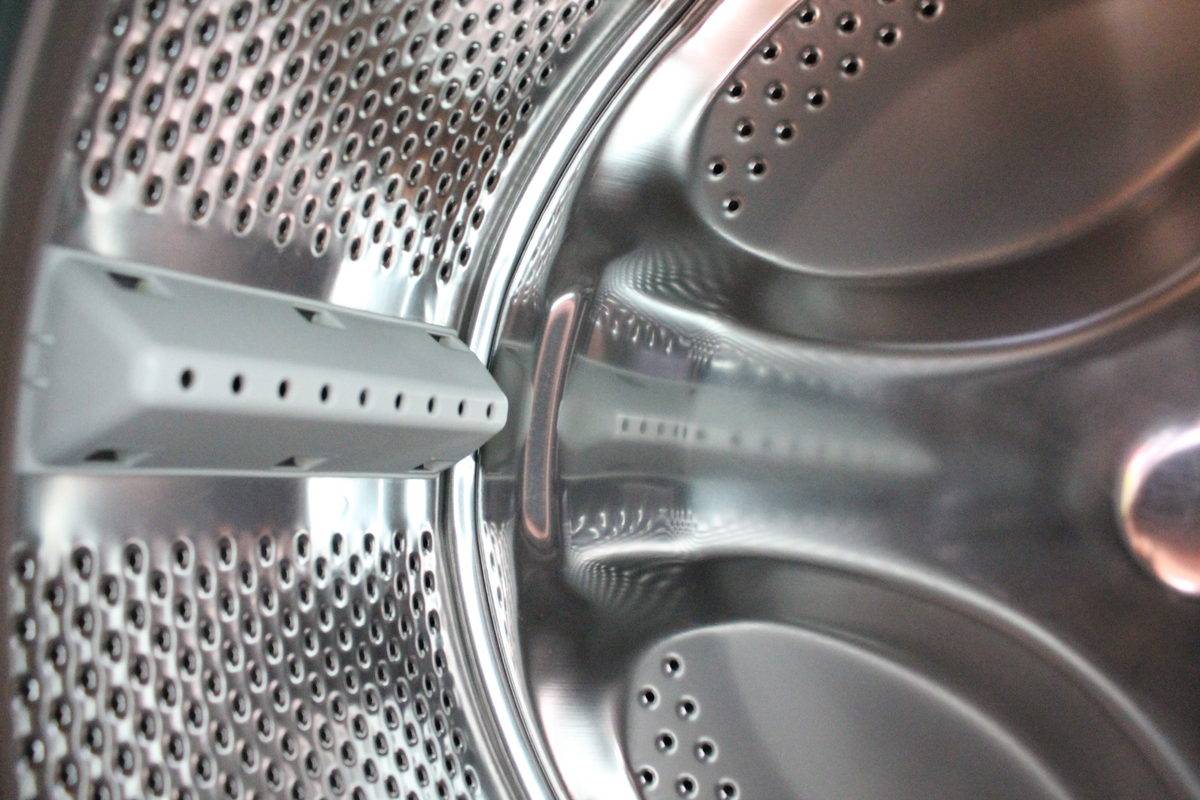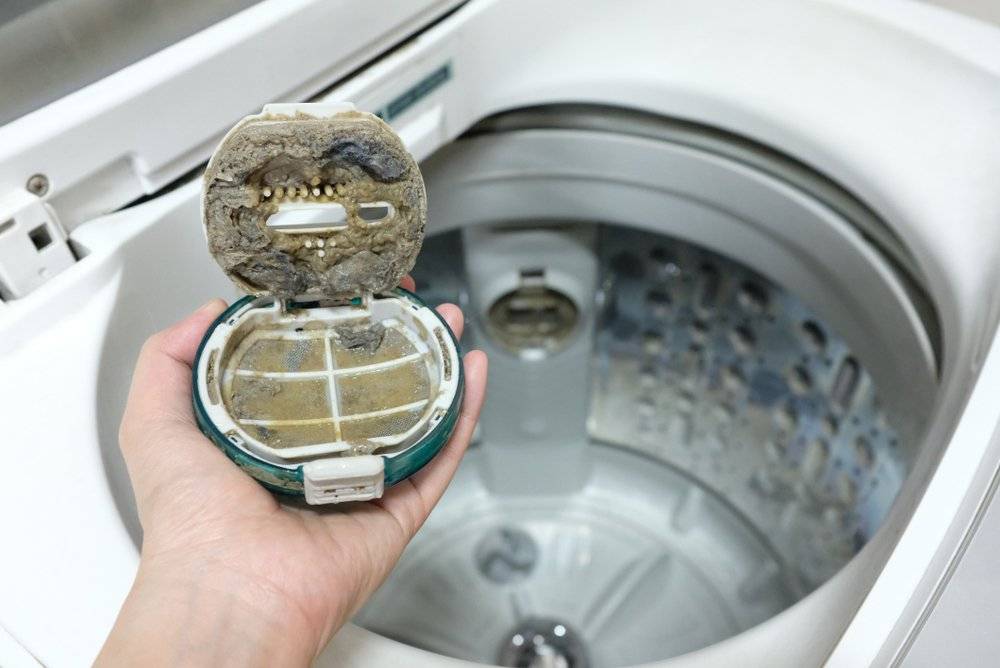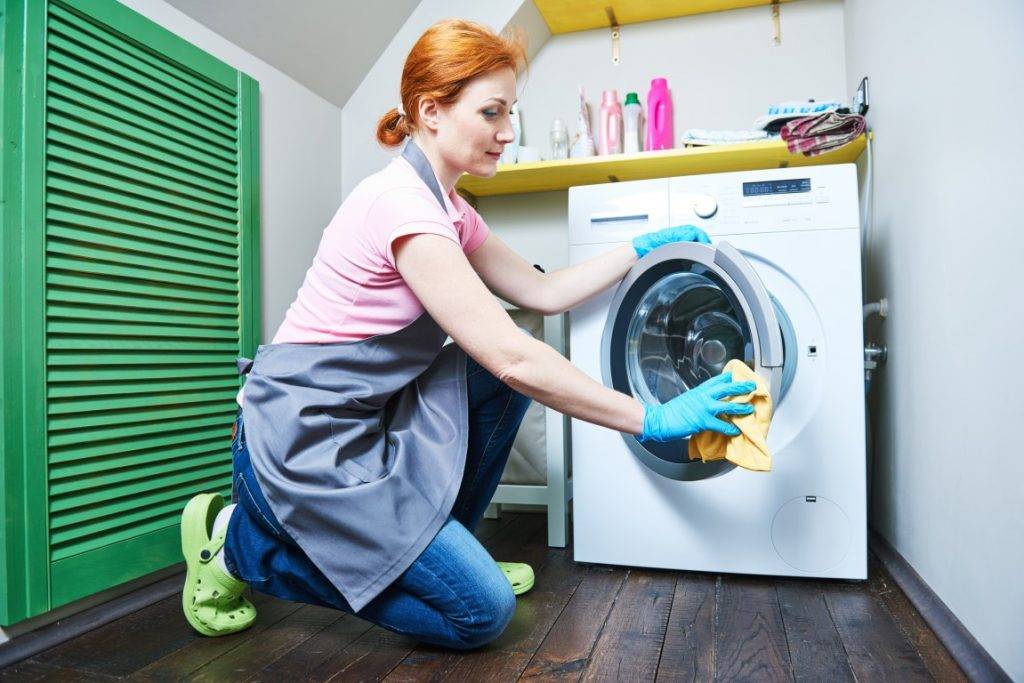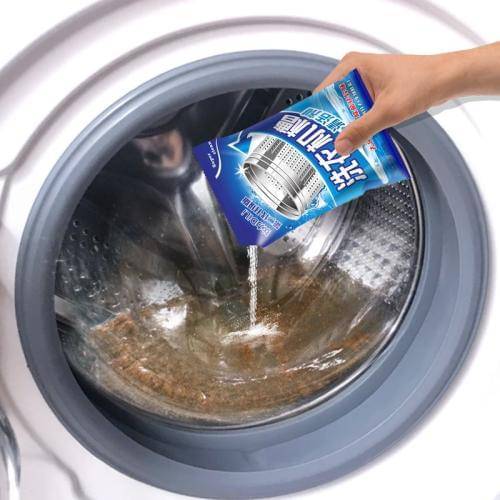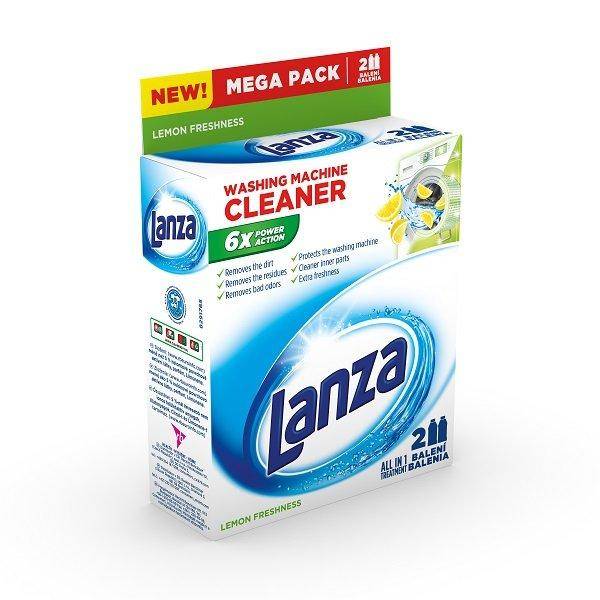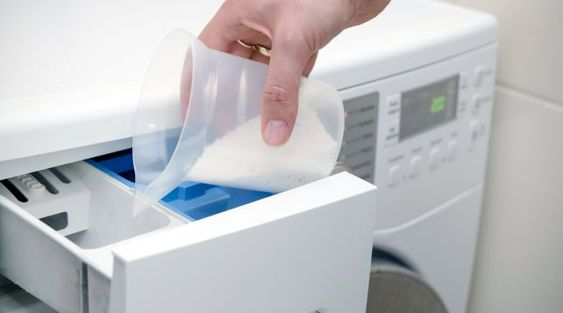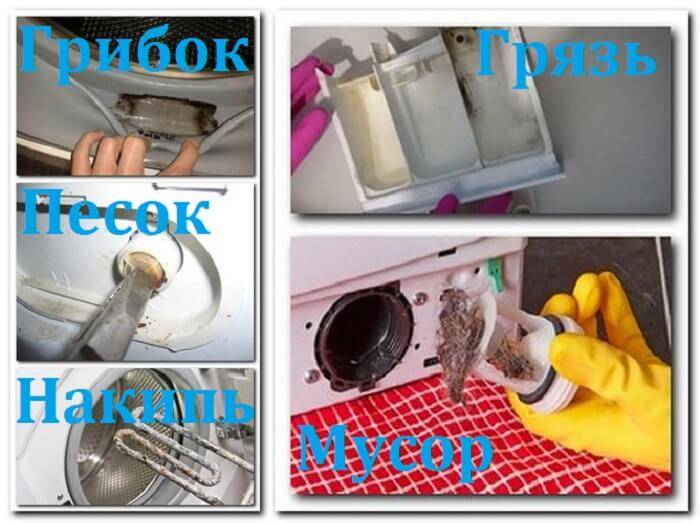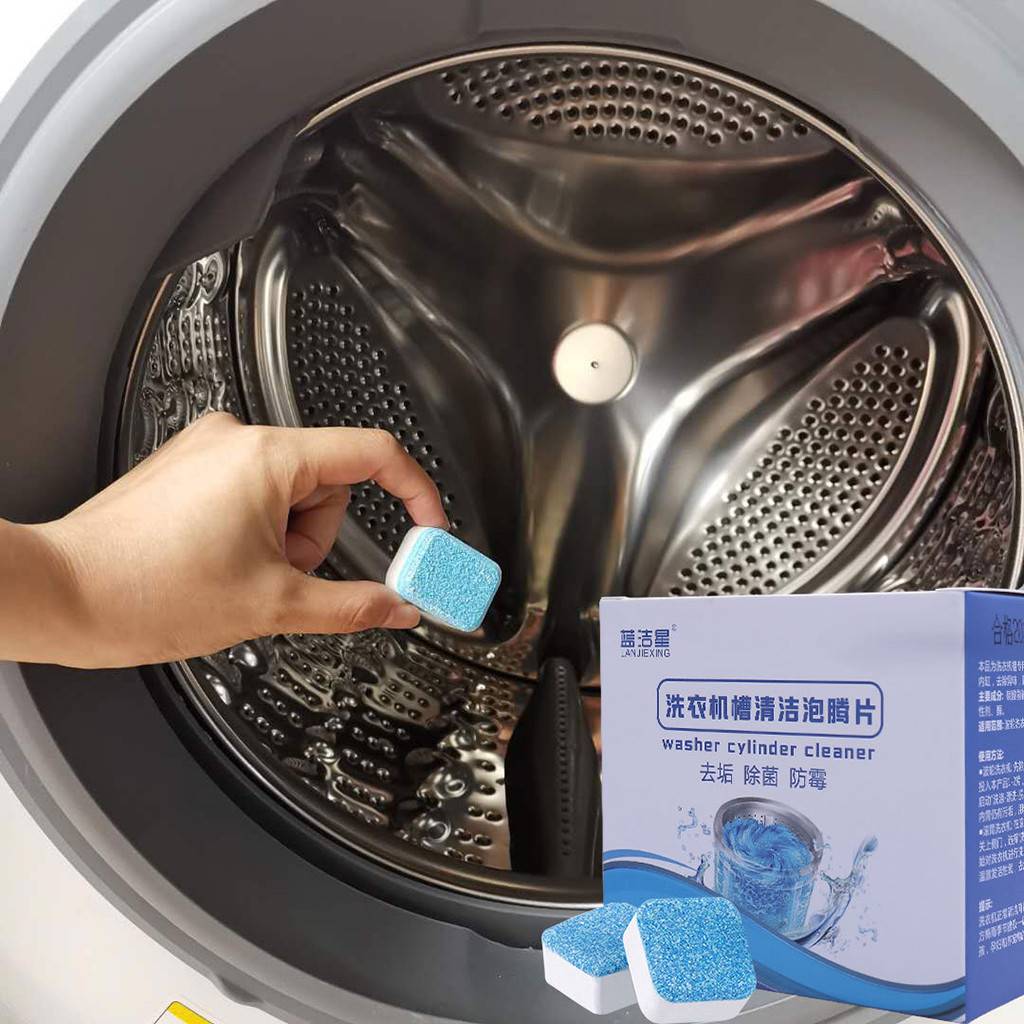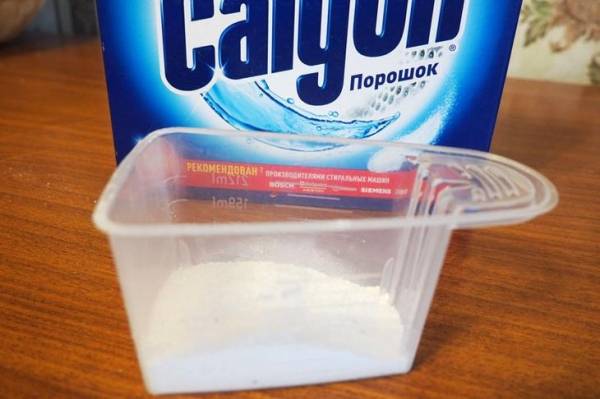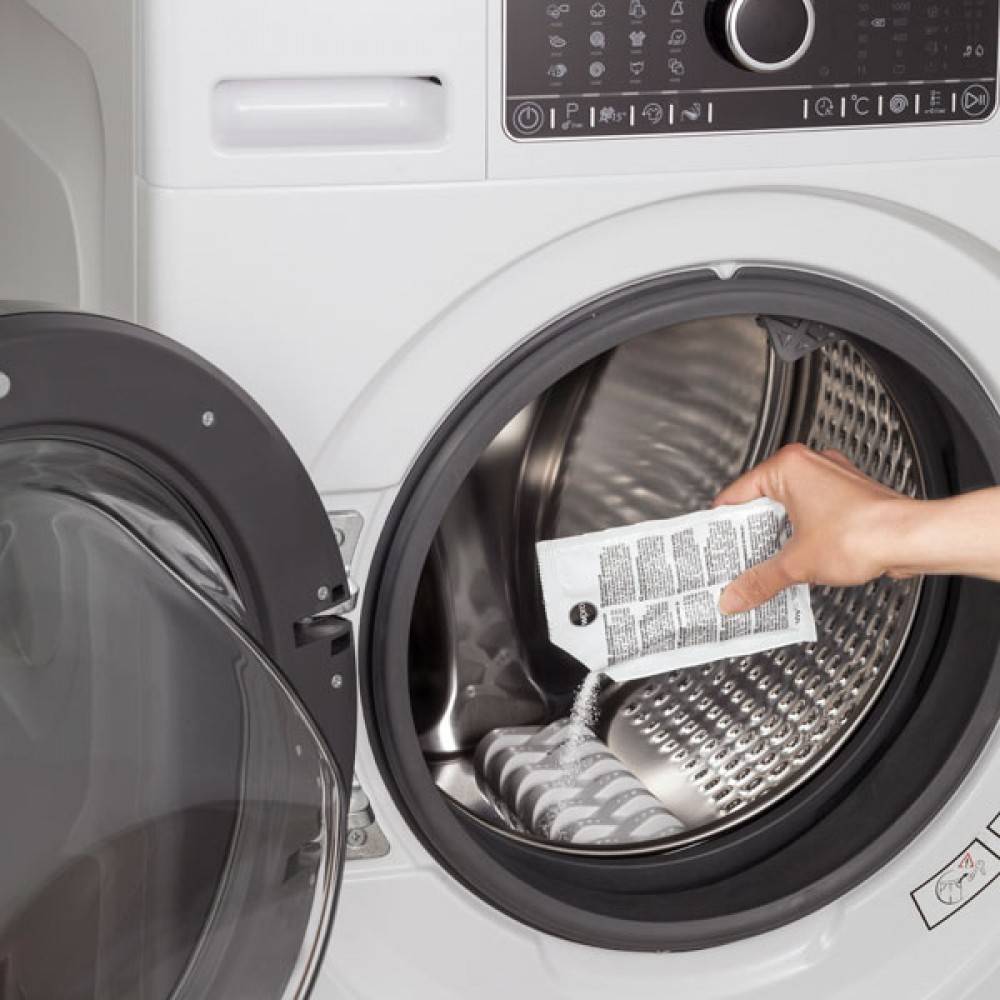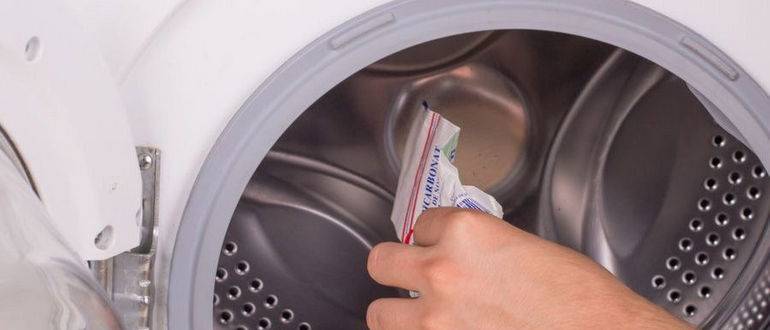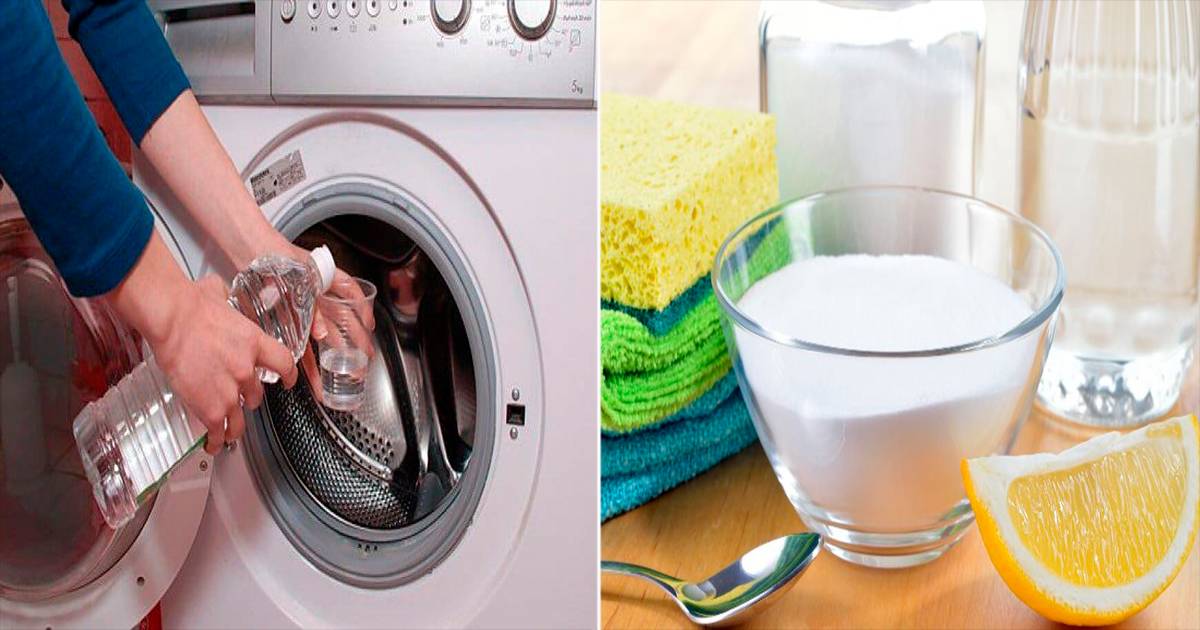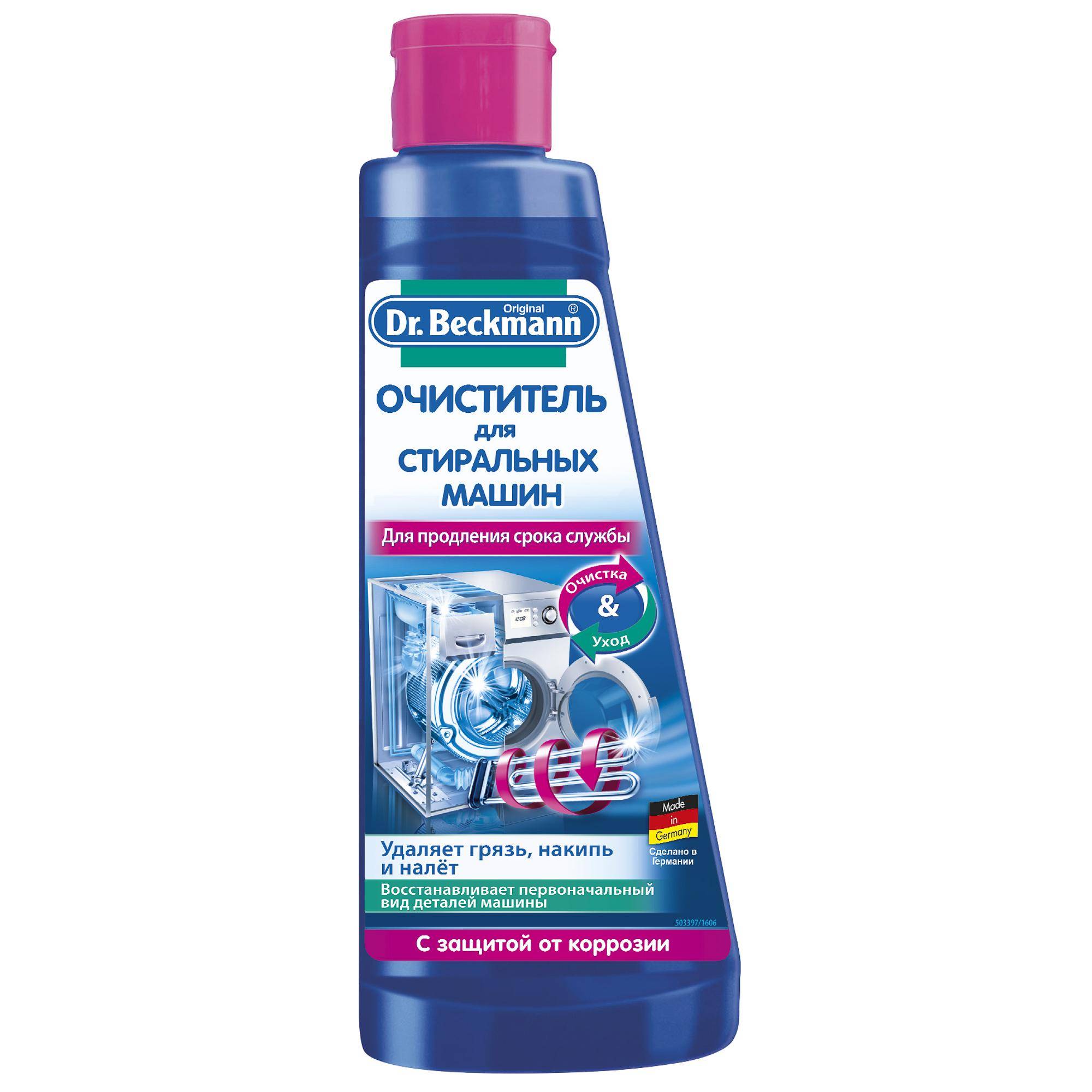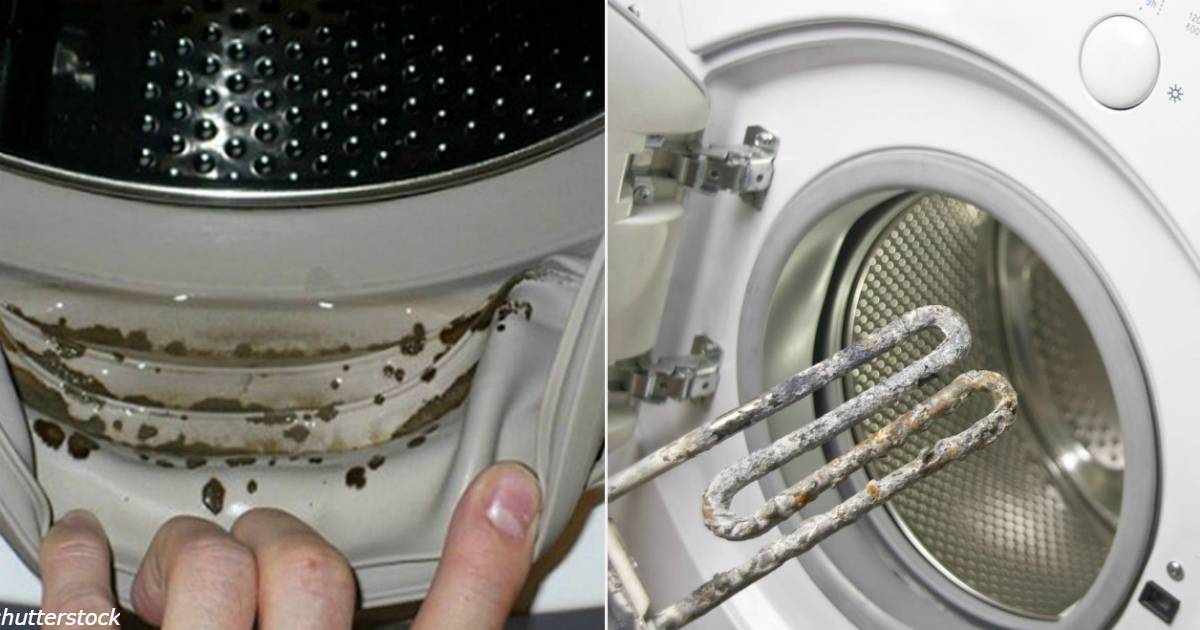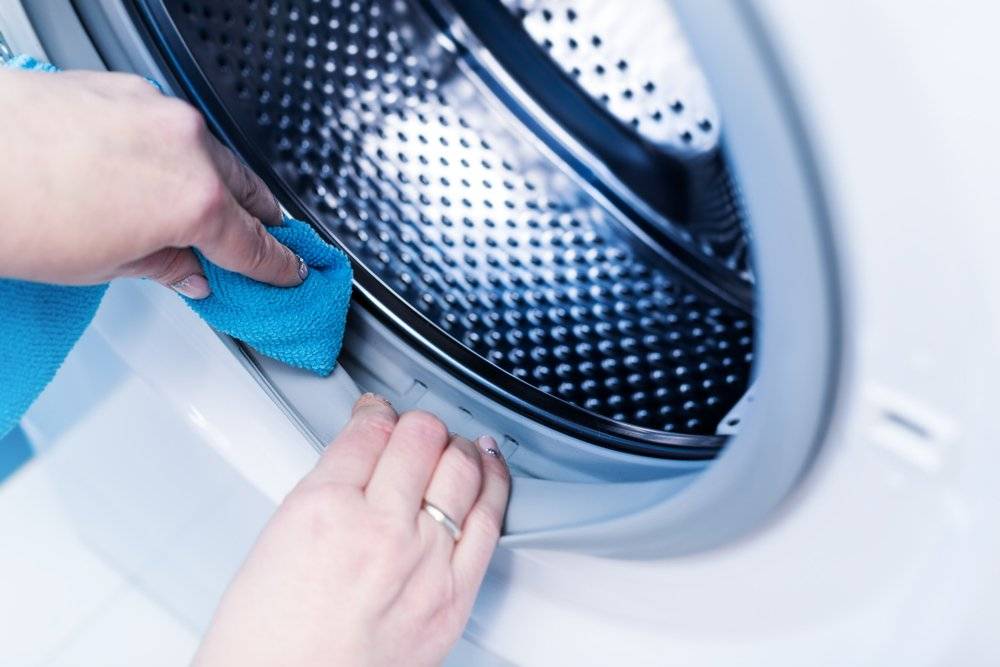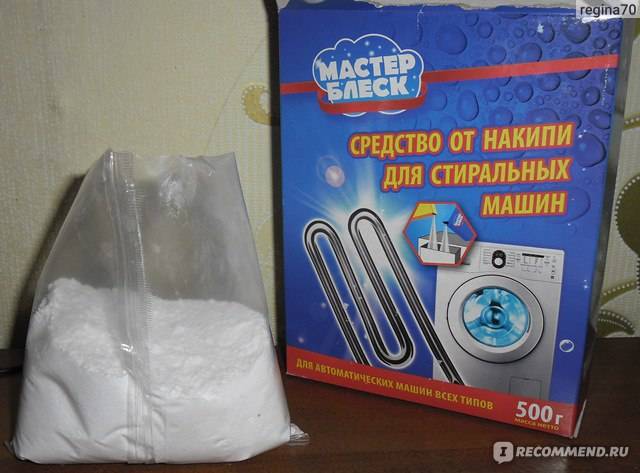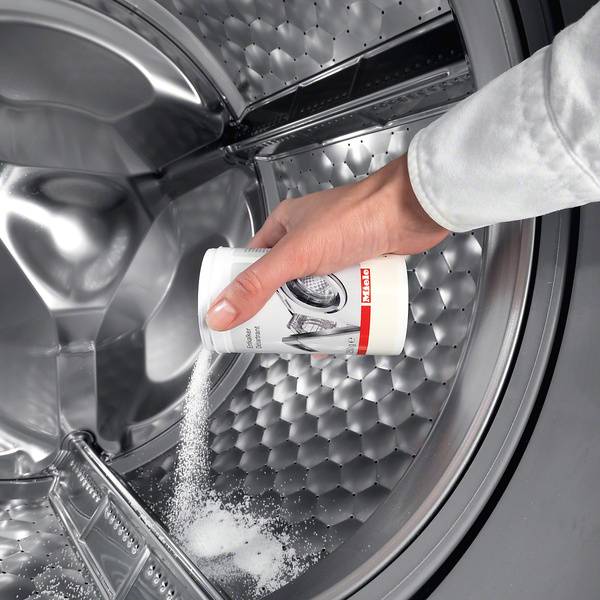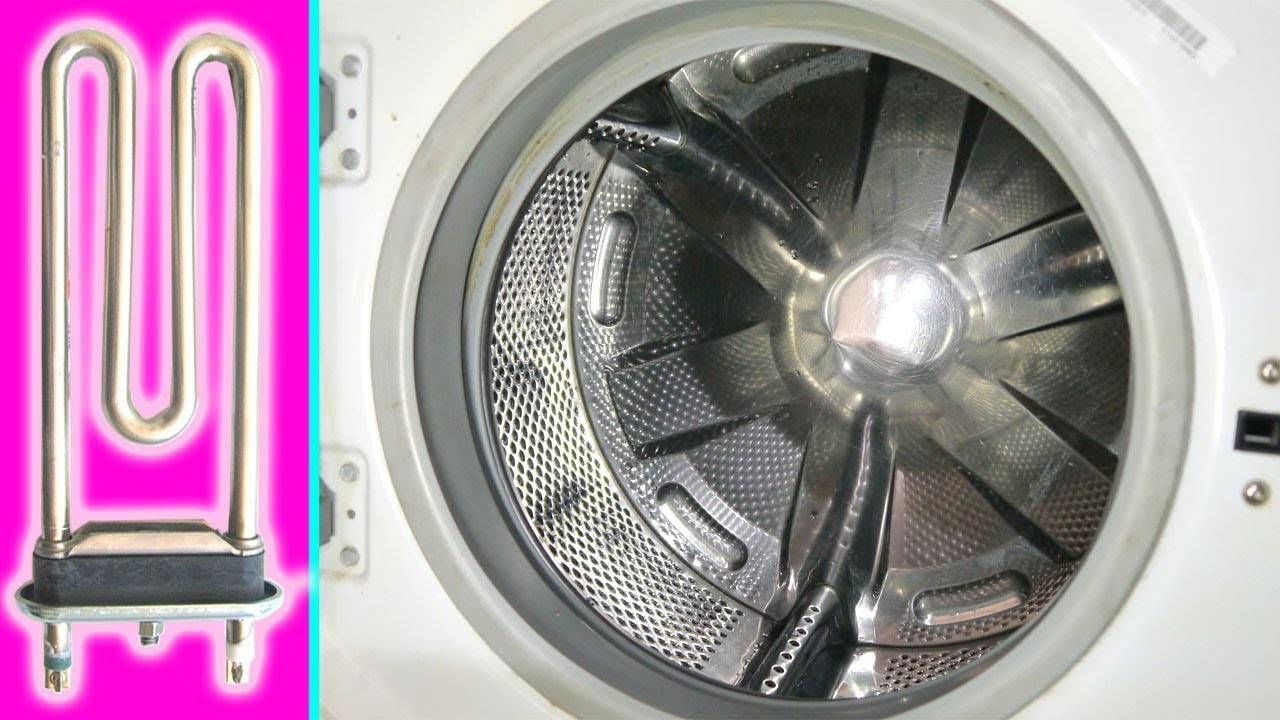Prevention of pollution of the machine
A washing machine is a modern, irreplaceable piece of equipment in any family. For long-term use, it is enough to comply with all available preventive measures:
- Do not leave the door closed.
- Remove laundry immediately after washing.
- Do not store dirty items in the washer.
- Keep the drum clean and dry.
- Use the correct dosage.
- Run periodically high temperatures.
- Check the tank, sleeve, tray and parts for mold.
- Run a wash with citric acid once a month.
- Watch out for filters and valves so that they do not clog.
- Do not overload the drum with laundry.
If during the washing of the laundry you hear an extraneous noise or rattle, the water does not drain or, on the contrary, slowly fills up, there is an odor, it is better to stop the wash and check it properly for blockages. Having discovered a problem in time, you can quickly solve it without resorting to repairs.
Filters
Usually, there are 2 filters in an automatic machine: a coarse filter, through which water flows from the water supply to the machine, and a drain filter, which traps debris that gets into the tank along with clothes (threads, fabric fibers and other trifles).
Over time, you may encounter clogging of these filters. Then they will need urgent cleaning. For this purpose, you can call a wizard, or you can try to clean the filters at home.
Procedure for washing the coarse filter:
- If the equipment is not built into the wall, then this filter can be found in the hose located on the washing machine itself.
- At the end of the hose, a mesh is installed that does not allow debris from the water supply. This mesh must be removed and cleaned thoroughly with cotton swabs.
- If the filter is heavily clogged, unhook the entire hose and connect it back to the pipe. Then direct the other end into the bucket and turn on the water at maximum pressure. The stream of water will dislodge any debris from the filter.
How to clean the drain filter of your washing machine:
- Most often this filter is located at the bottom. To get to it, you need to open the lid, under which there is a tube and a round piece with a handle. The latter is the drain filter.
- Direct the drain hose into a bucket and remove the plug to dispose of the water.
- Then unscrew the drain filter and clean it with cotton swabs.
If the washing machine is arranged differently, then you can refer to the instructions or call a specialist at home.
Useful Tips
- In the process of washing, use exactly the amount of powder, conditioner, bleach that is needed. Surplus deposits in the appliance and can cause dirt and odors.
- Remove excess from all pockets before washing.
- If dirty things lie in the drum, then there is no need to delay the start. The same goes for removing the washed laundry.
- For washing, use the low and medium temperature modes more often - this also prevents the appearance of limescale.
- If the water is hard, then a magnetic filter in front of the water supply hose is an excellent prevention method.
- Leave the door of the machine open after washing.
Cleaning the powder container
Cleaning the detergent drawer is straightforward. The main thing is to figure out how the container is attached, and carefully remove it without damaging the clips. Usually the side latches hold the tray, so it is enough to press on them and pull the container towards you, slightly lifting it. Some models are equipped with a special button that you need to press to eject the compartment.
After that, the container is well washed in warm running water.Old dirt and dried powder are removed with a toothbrush. It is also convenient for her to clean out dirt from all grooves and grooves. Mold traces and stubborn plaque can be removed with baking soda, citric acid or bleach. Additionally, they clean the place in the machine where the tray is inserted. There, too, pollution is often collected.
Mold cleaning
Black plaque inside the car is mold. It appears where it is humid, warm and rarely ventilated, for example, in old bathrooms. Obviously, the washing machine also meets all the mold requirements. It turns out that it is easy to get a fungus inside, but to get rid of it, you will have to make an effort.
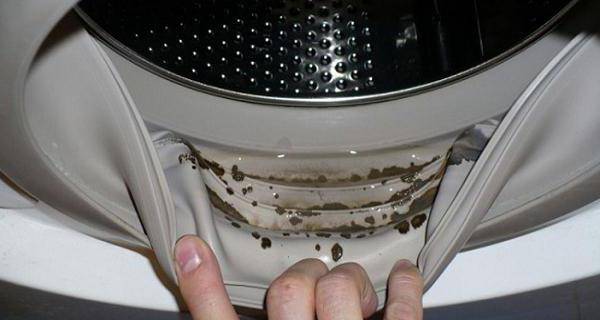
You can use a folk remedy for cleaning the drum of a washing machine - citric acid (run an empty wash with acid instead of powder at 90 degrees). Then rinse the gum with a solution of vitriol, and the tray for the powder with vinegar. If the mold hasn't had time to spread deep into the car, these methods will help. Otherwise, you will have to call the master and clean all the details.
A large assortment of specialty chemicals is also on sale. So, a popular tool for cleaning washing machines from mold is the Korean "Se-Plas" or the Japanese Kaneyo gel.
If the mold has been removed, continue to look after the equipment so that the fungus does not reappear:
- Move the clipper to a drier area such as a kitchen.
- Ventilate the drum by opening the door.
- Use gel and liquid powders less often - sometimes they leave behind mucus, which is an ideal medium for fungus to grow.
Perhydrol
Perhydrol is the pharmacy name for hydrogen peroxide. This liquid is also used by housewives as a folk remedy with a whitening effect. It is sold in bottles with a concentration of 3% and is excellent for removing scale, mold and other contaminants in a typewriter.
Unlike chlorine, peroxide is absolutely safe: it does not leave toxic vapors and sediment harmful to humans, and is completely destroyed in oxygen and water. But there is also a significant drawback of the drug - it will take a lot of time for an effective result. As a rule, it takes at least 3 hours to remove medium-intensity stains. For front-end machines, the hours allotted for the procedure are doubled, since a repeated cycle is mandatory.
The cleaning procedure itself is as follows:
- pour perhydrol into a spray bottle (you do not need to dilute with water, you need the maximum concentration);
- spray generously on the inner surfaces of the machine, cuff, drum;
- close the drum and leave for 10 minutes;
- clean contaminated areas with soda;
- turn on a long cycle with water heating at 90 degrees;
- at the end of the program, set a second rinse.
Peroxide tablets are used with some differences. Add 10 tablets and 200 g of soda to the powder receptacle and immediately start the high-temperature cycle
It is important that the program lasts at least 2-3 hours, otherwise perhydrol will not have time to "fight" with dirt and mold
Cleaning the washing machine pump
Before as clean the pump in the washing machine, you need to remove it. The part is installed at the bottom of many units. This place is hidden behind a removable bottom panel or an opening small door on the front facade. Behind it is an element with a crossbar in the center for rotating the pump. On some models, a tube is installed behind the door.
Before removing the pump, place a container in front of the machine to collect water or place a dry cloth folded in several layers. On hose models, first remove the tube from the retaining clip. In this case, the tube is directed into a container for collecting water and the plug is opened to drain the liquid remaining after washing.
After that, it remains to remove and clean the pump. To do this, turn it by the crossbar counterclockwise and pull it towards you. Large debris is removed from the device.To remove dense plaque on the blades, you can use a soft toothbrush, after which the part is rinsed under running water and installed in its original place.
And a little about prevention
- Use just as much powder, bleach and conditioner as you really need (see the manufacturer's instructions). After all, excess detergents do not enhance the result, but simply settle and accumulate inside the washing machine.
- Always remove small items from pockets so that they do not clog the drain filter.
- Try not to delay starting the machine if you have already thrown dirty things into the drum. Well, take out clean things immediately after washing and send them to dry.
- Try to keep the machine open at all times to prevent mold from developing in it due to high humidity.
Cleaning the powder tray
Before cleaning this washing machine component, remove it. If you do not remember how to do this, it is better to look in the instructions for the device so as not to break anything in the process. If you cannot remove the tray (this happens), you can still clean it, but you will need to pre-soak it. There are many places in the tray that are difficult to reach. For soaking, it is necessary to make a solution of any detergent and spray the tray from a spray bottle, leave for 2-3 hours. After that, cleaning will be much easier.
If you succeed in removing the tray, then everything is even easier. If any residues of powder or other agent are found inside, it should be removed. This element needs cleaning, as over time, a coating of rust, powder and other agents forms on it. To remove all this plaque will help:
- Soda-vinegar mixture - proportions 1: 2.
- Hot water + baking soda + vinegar - you need 3 parts water 1 part baking soda and 2 parts vinegar.
Having prepared the product, it should be applied to all elements of the tray and left for 2-3 hours. Only then proceed with cleaning with a sponge (large elements) and a toothbrush (hard-to-reach places). It remains to rinse the tray under running water and let dry or wipe dry.
Step 1: descaling the drum and heating element of the washing machine
At the first stage, we need to clean the inside of the machine, namely, remove mineral deposits on the heating element and drum. How to descale my washing machine? The secret of all methods is simple and the same: since the scale consists of magnesium and calcium salts, it is necessary to act on it with organic or inorganic acids. What acids are there in every home and are they worth nothing? That's right, ordinary vinegar or citric acid.
Method 1: how to clean a washing machine with vinegar and soda
You will need:
- 2 cups alcoholic white vinegar (preferred) or regular vinegar 9%
- 1/4 cup baking soda
- 1/4 cup water
- A sponge with a hard side.
Mix the baking soda and water in a small bowl, add the baking soda mixture to your machine's detergent tray, and pour the vinegar into the drum. Run the machine idling at the highest temperature and for the longest time.
Method 2: how to clean a washing machine with citric acid
Cleaning your washing machine with citric acid is even easier. You will need 1-6 packs of citric acid. How much citric acid to pour depends on the volume of the washing machine and the degree of its pollution.
Add citric acid powder to the detergent compartment. Run the machine at maximum temperature and operating time.
Prevention of contamination of the washing machine
Knowing how to clean the pump and drum in the washing machine, it is better to avoid the formation of scale and dirt.
Prevention rules are simple:
- Compositions for washing are poured only into the compartment, which is intended for this. An exception applies to capsules with liquid fill.
- Use only recommended detergents.
- Do not put dirty items in the drum. Before loading, objects are sorted by color, pockets are checked, zippers and locks are fastened.
- Do not leave clean items in the machine after washing. Excessive moisture will lead to mold and rapid unit failure.
- They regularly take care of the equipment, clean and wash all the elements.
- They use special means for softening water, filters for cleaning liquids from metal and mineral components. There is a wide range of filters on sale that are placed on the water supply pipe. The device will help to increase the service life of equipment with an excess content of metal salts, sand.
How to brush animal hair
Pets' hair at the washing machine suffers the most from:
- Water level sensor, it is also a pressure switch. After each cycle, it is systematically clogged with wool. For cleaning, disconnect the sensor tube and clean it under running water.
- Pump filter. Its cleaning is described above. It must be remembered that if there are pets in the house, then it is advisable to clean this element after each wash cycle.
In order not to have problems with wool deposits, things are cleaned of animal hair before sending them to the washing machine. Of course, you won't be able to remove everything, but nevertheless, this procedure will facilitate the fate of a household appliance.
Cleaning the cabinet, door and gum
The sealing gum or the cuff of the washing machine is an indispensable element of cleaning during the care process. Rubber should be cleaned carefully, but with good quality, so that there are no problems with leakage.
This place accumulates dirt and mold - which is why it is important to regularly clean it. Deposits in this area contribute to the appearance of unpleasant odors
Any cleaning product, including regular baking soda, will help with the process. In some cases, if mold and a strong smell have already appeared, then it is worth using household chemicals:
- Domestos.
- "Comet".
- "Whiteness" - it is often impossible to use it, as this leads to the destruction of the rubber seal. As a result, it will need to be changed.
The order for different means does not differ, it looks like this:
- Apply the product to the sponge.
- Carefully unscrew the cuff of the washing machine towards you.
- Wipe down the metal parts of the case.
- Clean the gum itself. And not only in the lower part, where dirt accumulates most of all, but also along the entire diameter.
It is also necessary to clean the door of the machine. This can be done using a vinegar solution, which requires a 50% concentration of vinegar essence. It is not difficult to prepare it - you should take equal parts of the essence and water, mix well. It remains to wipe the glass and wipe it dry with a dry cloth. Gloves should be used when handling the solution.
The external elements of the washing machine must be wiped with a damp sponge; if necessary, you can use an existing cleaning agent.
Cleansing recipes with baking soda, vinegar and citric acid
An effective way to clean your washing machine is with vinegar and NaHCO3. The recipe removes scale, prevents the development of fungus. Cleaning occurs after activating the device.
A vinegar solution is placed in the contents of the drum, 3 tablespoons of baking soda are added to it. The wash starts in the boiling mode, all items are pre-removed from the drum.
After the end of the cycle, 100 ml of vinegar 9% is added to the drum, after which the mode of the same name is activated. At the end of the procedure, the doors are wiped with a napkin, the filter is cleaned of the remaining dirt.
Vinegar can leave a negative odor from the inside of the unit. To eliminate it, an idle rinse mode is turned on, the machine is thoroughly wiped.
A mixture of citric acid and soda ash quickly removes limescale from the mixer area. Used 150 g lemon powder and 15 g NaHCO3. The mass is placed in the detergent tray, then the rinse mode is set at a high temperature.
NaHCO3 cleans the washing machine no worse than galangal, while being affordable and safe. With the additional use of citric acid, scale and mold are quickly eliminated. The procedure is carried out as needed, on average, once a month.
White
It is famous for its antibacterial properties and whiteness. It is often added for sanitizing rooms and bleaching clothes, but the liquid is often used to clean washing equipment. The main thing when handling bleach is to take into account three important nuances:
- the liquid works only in cool water, and when heated above 40 degrees, it loses its effectiveness;
- chlorine will not dissolve lime, but it will kill the fungus;
- when pouring whiteness, gloves are required.
On average, you will need about 250 ml of chlorine bleach to clean your washer with your own hands. It is necessary to empty the drum from the laundry, turn on the "cold" program (with water heating up to 40 degrees), wait until the end of the set and add whiteness to the powder receptacle. Then we give the machine a minute and pause the cycle. We wait five minutes and restore the regime.
The whiteness will quickly wash away dirt and disinfect the washer. The main thing is to wash "at idle", as the ingress of bleach on the clothes will lead to discoloration of the latter. Such cleaning can be repeated no more than once every six months.
Step 4. Elastic band
The sealing gum, which is fixed between the drum and the door, is a place where debris and mold accumulate. If you know how to clean an eraser in a washing machine, then you can solve issues with an unpleasant smell and with black spots on it.
So, you will need:
- Ear sticks;
- Cotton swabs;
- Vinegar / Soda / Whiteness / Copper sulfate.
First, go over the seal thoroughly with cotton swabs soaked in warm water. Stuck and dried stains must be treated with any of the disinfectants described above. For narrow and hard-to-reach places, ear sticks are suitable.
After processing the entire surface, it is necessary to start the machine into operation.
How to clean mold from a washing machine
Most of all, the fungus does not tolerate the effects of acids, so we recommend using a solution of lemon or vinegar, which must be applied to the site of infection and left for a while. You can also take Whiteness or quality toilet cleaners.
After treating the fungal spots with acids, hit them with a high temperature, turning on the mode at 95 degrees.
When finished, wipe the gum and the inside of the machine dry and leave the door open, let the washer "breathe" for a few days.
And you can learn more about how to clean the washing machine from the smell in our article.
Cleaning the machine with soda ash
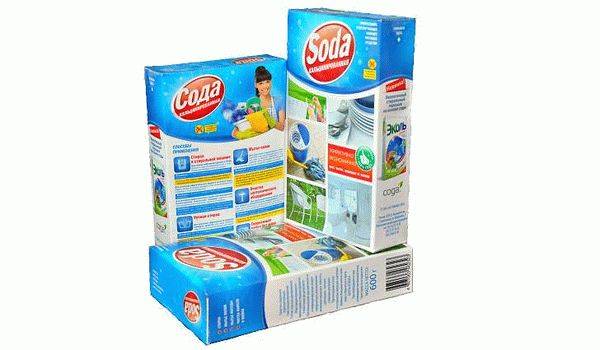
Before the cleansing procedure, wear rubber gloves to avoid allergic reactions on the skin. To remove plaque, it is recommended to use soda ash after mixing it with water.
The mass is applied to areas prone to mold. They are the drum, powder compartment, cuff folds. For cleaning, it is allowed to use cotton swabs, a toothbrush.
- Soda ash or baking soda is used to prepare the solution. It is dissolved in water 1 to 1. The components are mixed until homogeneous, applied to the drum, and other parts are processed.
- The soda solution is left on the parts for 30 minutes, then the treated areas are wiped with a sponge.
- The fast wash mode is set without clothes.
- Internal parts are processed for deep cleaning. The heating element is not affected during the procedure. To prevent limescale build-up, the water is softened. The effect is achieved by placing 100 g of sodium bicarbonate in a powder container. After that, a fast rinse is activated.
- The hose, filters are unscrewed, then removed, washed with a solution of soda. First, the inlet hose is removed, then the valve is removed.The area under the tap is washed. All elements are inserted back into the machine and screwed on.
- At the end of the procedure, the drain filter is cleaned. It is located at the bottom of the washing machine under the cover. A basin is pre-placed to prevent the formation of a puddle. After removal, the filter is treated with a solution of NaHCO3, washed under a tap. The nest is cleaned, after which the processed element is placed.
The procedure is recommended to be repeated 2 times a month when using soda ash. To maintain cleanliness, a pinch of a chemical element is added to the powder for each rinse.
The best folk methods
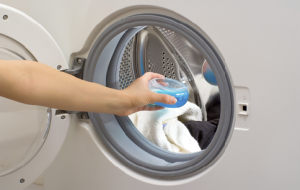 Acid is the basis of all cleaning products for the prevention and formation of limescale.
Acid is the basis of all cleaning products for the prevention and formation of limescale.
It reacts chemically with the salts in the water and thus removes scale.
- Plain citric acid powder is poured into the detergent drawer. For every 6 kg of loading of the machine, 100 grams of powder is taken. Further, the longest cycle starts with a temperature of more than 60 degrees.
- Some washing machine repairmen advise pouring citric acid into the tray instead of powder and in the evening start washing at a temperature of at least 90 degrees without spinning. Disconnect the machine from the mains in the middle of the cycle. In this state, she should stand all night. During this time, the heating element and drum will be completely cleaned. Then the machine should be connected to the mains and it should continue the wash cycle from the stopped place.
- Sometimes whiteness is added to citric acid and a long wash cycle with a temperature of 90 degrees is also started. With this method of cleaning, good ventilation is required in the room where the washing machine is installed. It is also imperative to ventilate all other rooms where people will be at this moment. Chlorine vapors released from the whiteness dissolved in water, during an idle run of the longest cycle with a high temperature, can affect human mucous membranes.
- Cleaning with acetic acid. Pour 50-100 ml of vinegar into a tray for powder and conditioner. The longest wash cycle starts with a temperature of 60 degrees. This cleaning is more aggressive but also more effective. You can de-energize or stop the washing machine for 1 hour and then continue the cycle.
Descaling with folk remedies should be carried out no more than once a month, because the acid gradually destroys the rubber parts of the machine.
- You can remove mold and mildew from the drum using regular soda. 250 grams of baking soda is dissolved in 250 ml of warm water. With this solution, you need to wipe the inner surface of the drum.
- Perfectly removes mold spores, any chlorine-containing products (including whiteness and other bleaches). 100 ml of the product is poured directly into the drum and a wash cycle is started at a temperature of 90 degrees. A wash of 30 minutes is sufficient for cleaning.
- 50 grams of copper sulfate is poured with 100 grams of warm water. This solution is mixed well and poured into the drum of the washing machine. A 30-minute wash cycle starts at 90 degrees.
All cleaning procedures for the heating element and drum using washing are carried out without laundry!
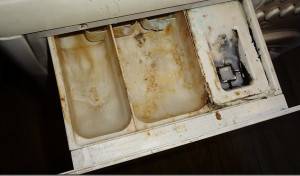 The washing machine must be cleaned at least once a month.
The washing machine must be cleaned at least once a month.
If the machine is used more than 3-4 times a week, then cleaning is carried out 2-3 times a month.
Any chemical agents, citric and acetic acid, affect not only scale, but also all other parts of the machine. Therefore, this is very carried away.
Signs of dirt in the washing machine
Any automatic machine requires maintenance. Regular rinsing, the use of descaling agents, cleaning the powder tray, the drain hole - all these actions will increase the service life.
The following signs indicate the appearance of dirt inside the device:
- Stains and streaks on the laundry after washing. They can be yellowish, white. This means that scale and metal salt deposits have formed on the parts.
- The wash cycle takes longer than usual - there is a thick layer of limescale on the parts.
- The machine does not rinse the laundry well enough - a lot of powder or a clogged water supply hose.
- Insufficient spin. There is a thick layer of plaque on the surface of the drum.
- An unpleasant odor from the drum, powder compartment, etc. is a clear sign of mold.
Experienced housewives try to run the wash infrequently at high temperatures in order to reduce the risk of white plaque formation.
How to clean a top-loading washing machine
Cleaning is carried out at the highest temperature. First, pour 2-3 cups of vinegar into the water and let the machine stir the solution for a couple of minutes.
Then add half a cup of baking soda. Allow the components to react, then switch off the appliance and leave it to soak. This will take from 30 minutes to an hour.
While the insides of the machine are being cleaned, take care of the rest of its parts. Mix vinegar and water in a 1: 1 ratio and wipe the surface of the device with the solution, clean the powder compartment.
When the machine is wet, resume washing. Wait until all the water is drained and remove the remaining dirt with a sponge.
Cleaning the filter
The drain pump filter is an important part of the machine, if you do not pay enough attention to it, sooner or later a blockage will form, and the washer will not drain the water at all. There is no need to invent any complicated cleaning methods, everything is extremely simple
To do this, you will need a small container, a towel or rag, any flat object that will help open the hatch.
The order is:
- Open the flap so you can access the filter drain hose.
- Before unscrewing the filter, lay a rag (towel) and place the container - a small amount of water will flow out of the hole. Maximum - 0.5 liters, very rarely more.
- After removing the cover (completely unscrewing it), you need to remove the accumulated debris, dirt, sometimes there are coins, wool and other foreign objects.
- Wipe the hole, rinse the cover, reassemble in the reverse order.
The washing machine also has a water inlet filter, which must also be cleaned. Over time, clogging occurs with rust, sand. If these deposits are critical, then an error appears on the machine screen, which can be deciphered as "water intake is impossible."
The process looks like this:
- Close the water supply tap to the appliance.
- Open access to the back cover, often the device needs to be deployed.
- The water supply hose is located on the upper right.
- Unscrew the nut that secures it counterclockwise.
- A mesh filter can be seen inside. It should be removed and rinsed with a toothbrush under running water.
- It remains to put the filter in place and screw on the hose.
How to descale with citric acid
The biggest enemy of the internal parts of the automatic machine is scale. It can be dealt with with the help of special chemicals, or with citric acid.
The main object is a heating element or a heating element. For him, scale has a detrimental effect. Citric acid will also effectively remove scale from all metal parts of the washing machine. The procedure is simple, you don't even have to use a rag or sponge, it consists of the following steps:
- Free the device from all things.
- Pre-flush the collar, door glass.
- Pour citric acid into the powder compartment. For machines with a volume of 5 kg - 100 g, 6 kg - 120 g.
- Turn on the washing machine at + 90⁰ and the longest program.
- After the end of the cycle, cleaning is also over.
The main protection of heating elements is timely descaling.
Citric acid not only removes limescale, but also helps get rid of unpleasant odors and mold.
You can also descale the washing machine with vinegar. This method is extremely simple, very similar to the version with citric acid.The work will require 9% vinegar, which must be poured into the powder compartment in an amount of 100 ml., The machine should be started at the longest and highest temperature mode. When the water is heated, stop the cycle for 1.5 hours, then let the process complete.
Let's summarize
Getting too carried away with traditional cleaning methods is a bad idea. Citric acid can gradually deteriorate rubber parts. It is better to trust professionals and buy ready-made proven products. Plaque makes the drum difficult to operate and can cause drum breakage.
Remember that a cleaned heating element reduces energy consumption. Water softeners do not have the desired effect. They can also cause plaque from too soft water.
When buying any cleaning product, carefully read its instructions. This will not only allow you to use it most efficiently, but also extend the life of your washing machine.

